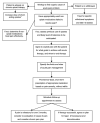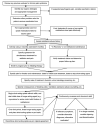Pharmacological pain control for human immunodeficiency virus-infected adults with a history of drug dependence
- PMID: 17481463
- PMCID: PMC2128698
- DOI: 10.1016/j.jsat.2006.10.005
Pharmacological pain control for human immunodeficiency virus-infected adults with a history of drug dependence
Abstract
Clinicians treating human immunodeficiency virus (HIV)-infected patients with substance use disorders often face the challenge of managing patients' acute or chronic pain conditions while keeping in mind the potential dangers of prescription opiate dependence. In this clinical review, we critically appraise the existing data concerning barriers to appropriate treatment of pain among HIV-infected patients with substance use disorders. We then analyze published studies concerning the choice of pharmacological pain control regimens for acute and chronic pain conditions in HIV-infected patients, keeping in mind HIV-specific issues related to drug interactions and substance use disorders. We summarize this information in the form of flowcharts for physicians approaching HIV-infected patients who present with complaints of pain, providing evidence-based guidance for the structuring of pain management services and for addressing aberrant drug-taking behaviors.
Figures


References
-
- Antoin H, Beasley RD. Opioids for chronic noncancer pain. Tailoring therapy to fit the patient and the pain. Postgrad Med. 2004;116(3):37–40. 43–44. - PubMed
-
- Ballantyne J. The Massachusetts General Hospital handbook of pain management. Philadelphia: Lippincott, Williams & Wilkins; 2002. p. 562.
-
- Ballantyne JC, Mao J. Opioid therapy for chronic pain. New England Journal of Medicine. 2003;349:1943–1953. - PubMed
-
- Basu S, Chwastiak LA, Bruce RD. Clinical management of depression and anxiety in HIV-infected adults. AIDS. 2005;19:2057–2067. - PubMed

